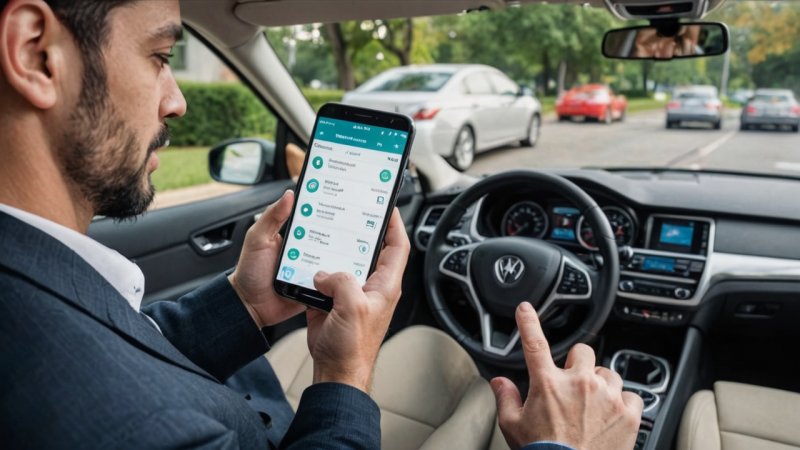In today’s fast-paced world, technology has permeated every aspect of our lives, including the way we manage our car insurance. Gone are the days when you had to sift through paper documents and make endless phone calls to your insurance provider. With the advent of innovative tools and platforms, managing your car insurance has become more efficient, transparent, and user-friendly. Whether you're trying to find the best rates, keep track of your policy documents, or submit a claim, technology has made it easier than ever. In this article, we will explore various technological solutions that can help you take control of your car insurance management.
Understanding the Basics of Car Insurance Management
Before diving into the technology tools available for car insurance management, it’s vital to understand what effective management entails. Managing your car insurance effectively involves:
- Policy Comparison: Finding the best rates and coverage options.
- Document Organization: Keeping track of your policy documents, claims, and renewals.
- Claim Management: Understanding how to file and follow up on claims.
- Monitoring Changes: Staying updated on any changes in your policy or coverage needs.
- Utilizing Discounts: Identifying and leveraging potential discounts available to you.
The Role of Online Comparison Tools
Online comparison tools have revolutionized the way consumers approach car insurance. These platforms allow you to compare quotes from multiple insurers in a matter of minutes, ensuring that you find the best coverage at the most competitive price. Here’s how to leverage these tools:
1. Gather Necessary Information
Before you start comparing quotes, gather the necessary information:
- Your vehicle's make, model, and year.
- Your driving history, including any accidents or violations.
- Desired coverage levels (liability, collision, comprehensive).
- Personal information (age, location, etc.) that may impact rates.
2. Use Reputable Comparison Sites
Choose reputable sites such as Insurify, Compare.com, or Policygenius that aggregate quotes from various insurers. Always read reviews to ensure the platform is trustworthy.
3. Analyze the Quotes
Once you have your quotes, analyze them based on:
- Cost: The monthly premium versus the yearly cost.
- Coverage: Ensure you compare similar coverage options.
- Deductibles: Understand how deductibles will affect your out-of-pocket costs.
- Insurance Company Reputation: Research customer reviews and ratings.
Mobile Apps for Policy Management
Mobile applications designed for insurance management have become essential tools. They offer convenience and real-time access to your insurance information. Here are some features to look for in a good insurance app:
1. Document Storage
A good mobile app allows you to store policy documents, proof of insurance, and claims information securely. This feature is especially useful in case of an accident when you need to provide proof of coverage.
2. Claim Submission
Many insurance companies now offer apps that allow you to file claims directly from your smartphone. This can include uploading photos of the damage, filling out claim forms, and tracking the status of your claim.
3. Policy Updates
Stay informed about changes in your policy or coverage options. Some apps send notifications for upcoming renewals or if there are opportunities for discounts based on your driving habits.
Telematics and Usage-Based Insurance
Telematics technology allows insurance companies to monitor driving behavior through devices installed in your vehicle or apps on your smartphone. This can lead to significant savings. Here’s how:
1. Understanding Telematics
Telematics devices track various metrics like speed, braking patterns, and mileage. By analyzing this data, insurers can offer personalized rates based on your driving habits.
2. Benefits of Usage-Based Insurance
Usage-based insurance (UBI) programs can reward safe driving with lower premiums. If you drive less than average or maintain good driving habits, you could save substantially on your insurance costs.
Claim Management through Technology
Filing a claim can be stressful, but technology has streamlined the process. Here are some key aspects:
1. Digital Claim Filing
Most insurers now offer online claim filing. Ensure you have all relevant information handy, including photos, accident details, and witness statements.
2. Tracking Your Claim
Use your insurance app or website to track the status of your claim in real-time. This transparency can reduce anxiety and keep you informed about the progress.
3. Communication Tools
Utilize chat features within your insurance app to communicate directly with claims adjusters. This can speed up the process and ensure you receive quick answers to your questions.
Leveraging Discounts and Offers
Technology has made it easier to identify and take advantage of discounts. Here’s how:
1. Online Research
Regularly check for discounts offered by your insurer. Many companies provide discounts for safe driving, bundling policies, or even for being a good student.
2. Comparison Tools for Discounts
Use comparison tools not only to find the best rates but also to identify which insurers offer the most discounts that apply to your situation.
3. Staying Informed
Follow your insurer on social media or subscribe to their newsletters to stay updated on new discounts or offers.
Conclusion
Managing your car insurance doesn’t have to be a cumbersome task. With the right technology tools and strategies, you can simplify this process, ensuring you get the best coverage at competitive rates while saving time and reducing stress. By utilizing online comparison tools, mobile apps, telematics, and staying informed about available discounts, you can take control of your car insurance management. Embrace technology, and make it work for you, so you can focus on what truly matters—enjoying the open road.






